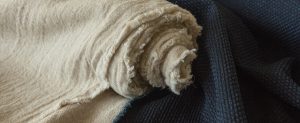Women in Business. The beautiful world of Mrs Pomeranz
This is the first in a series of interviews titled Women in Business‘ we are going to be conducting with amazing women who are both entrepreneurs and mothers. Being a mother myself and working as a freelancer, I find immense inspiration from stories of women who are not just managing but excelling in both realising their dream careers and keeping the family and themselves happy. I am convinced this is something truly important for women of today to read and share.
Mother of three, the creator and co-owner of the womenswear brand Mrs Pomeranz, Dasha Pomeranz is one to admire. I met Dasha several years ago and was instantly in awe of her calm manner and quiet determination to grow her brand and yet maintaining very close to her children. Dasha’s dresses are beautiful, she has a firm international niche of clients and she manages to balance her family life with a growing business that stretches between two countries.’ In the years we have known each other I am happy we had an opportunity to work together and hope there will be more room for collaborations. Welcome to the world of Mrs Pomeranz!
 Masha: Dasha, we are huge fans of your beautiful dresses, tell us a little bit about how you started Mrs Pomeranz? What prompted you to work in the fashion industry?
Masha: Dasha, we are huge fans of your beautiful dresses, tell us a little bit about how you started Mrs Pomeranz? What prompted you to work in the fashion industry?
Dasha: My grandmother was a talented but amateur seamstress and me and my sister and business partner Masha’ grew up with a melody of Zinger sewing mashine working in the background. We filled sketchbooks with dress design ideas and sewed costumes for our dolls. This was during the 90s, and at the time Russia was going through troublesome times, so our parents were keen on us following stable careers. Masha became an economist and I completed a journalist degree at MGU. I was a chinese tea master, a journalist, I worked in advertising and PR and then started to organise parties, and yet none of these jobs felt real or right. When my daughter Hannah was born something changed. I became more aware of listening to myself and started to realise what I was interested in and what I wanted to do with my life. I slowly started to drift in the right direction, first working in antiques then vintage and finally deciding to sew dresses. Masha really like this idea and soon our first collection of dresses was born. By our second season we started to sell dresses in shops around Moscow.
M: You started off as a small atelier in Moscow, and now you are globally selling through Etsy and other websites- how was it to make this transition from off line to online and what were the most difficult obstacles to overcome?
D:’ The transition from offline atelier to an online presence was mostly thanks to Etsy. A friend of mine suggested we should open our own Etsy shop so we did. We also came up with an idea to sell made-to-measure dresses.
I was really intrigued by the system of online sales. It turned out that something you made in Moscow, could be bought by a person from the opposite side of the globe. For example our first online order was from Albuquerque, New Mexico. Eventually we gained a wide range of clients from different countries- Japan, South America, Canada, USA, Singapore. Today many of our clients are based in Australia. I am intrigued by this, I have never visited this country, and yet I know that there are a number of women walking the streets of Australia in dresses we designed and had sewn in Moscow from Italian and British fabrics. I like this idea of a global market and unexpected new ties.
Eventually our dresses started to sell in shops around the world. Yet I still really enjoy working on individual orders through our Etsy shop. I really love choosing fabrics and discussing dress silhouettes. I gain great pleasure out of this.
The most difficult part about ready- to- wear is to take care of production and make sure it works like the clock. We have three factories and it took us a very long time to get here. As soon as you start to work with wholesale orders, the production side becomes very important. With individual orders its essential to understand what the client wants and what is the best way to achieve this. Choosing a fabric that is both beautiful and of great quality is paramount, bringing to the client the idea of what she will look like in this dress is as crucial. Nonetheless I love the process of selecting fabrics, and can spend hours choosing and researching. Its a little bit like hunting.
M:’ Mrs Pomeranz silhouettes are predominantly 1950s. Has this been a conscious choice or have you found that this shape simply suits and therefore sells the most?
D:’ Since I was a little girl I was always in love with full skirts. The Brazilian TV series Escrava Isaura was a big influence At the age of 7 overwhelmed by the mid 19 century fashion, I created my first full skirt dress collection.
It really is a very feminine silhouette, which suits many and does sell very well. I love full skirt dresses as they instantly allow you to feel like a madame. A quick fix for a lady.
M:’ Considering in mind that this is a business and you have to sell these dresses, how do you put together your collections? Is there much room for creativity?
D:’ Our first collection only consisted of full skirt dresses. At the time we weren’t interested in working with other dress shapes. So at some point we became conscious that our collections were starting to resemble a song on repeat- one shape season after season. Now I know that theres nothing wrong about repeating a shape thats favoured by both you and your clients again and again. The important thing is to keep finding new elements and making sure you place emphasis differently in each collection.
In our last collection we have added garments with new silhouettes: jackets, pencil skirts, A shape dresses. A lot of these became best sellers, so we are definitely going to do a repeat of these shapes next year in new fabrics. Each collection will have favoured pieces and those less favoured. Those that become best sellers tend to be pieces we really like ourselves and that we spent most time thinking about.
M:’ A lot of our customers are mothers who have started their own businesses or are about to take on this path. I am personally in awe of your ability to juggle three small children, a husband and a business. What is your secret?
D:’ It was always really important to me to see my children grow up, but equally I didn’t want to feel bored at the playgrounds. I found out I was pregnant with twins around the same time I had the idea to start Mrs Pomeranz. Jacob and Isac’s birth coincided with the opening of our atelier in Moscow. It was very difficult at first, and I wouldn’t have managed without the unconditional support of my husband, and our parents who help us a lot with our children. But I never doubted my decision and never wanted to stop, as making dresses is something very very important to me. This is my space for creativity, where I can invent something I find beautiful.
How to balance work and family. Most importantly- sleeping a lot is essential, maintaining a great mood and prioritising correctly. Then it is very simple. When you are doing something you love it consumes you. When you have your own business it takes up a lot of time, pretty much all of your time. But the work is sweet if what you do is something you love with your heart. Most importantly is to learn how to stop working when you are around your children.
M:’ You live in London and yet as I understand most of the business is still based in Moscow. How does that work? How many people are on your team?
D:’ There are around 10 people on our team. I work from London and Masha works from Moscow. I travel to Moscow frequently. We have 3 seamstresses working for us in Moscow and several’ people who are in charge of production and advertisement. We work with a few artists on developing our own prints. You, for example created our favourite print called Meadow featured below. We began printing our own fabrics two years ago in Europe and the UK.
M:’ You mainly work with cottons, and yet we would most definitely love to see a collection in linen. Would you consider this for future?
D:’ We like working with linen. We especially like linen with traditional Russian embroidery motifs. I often look at fabrics on your website. How about a collaboration?
























































One Comment
Donna
I am very inspired by Mrs. Pomeranz success. I love the clothing and the 50s vibe. I hope one day to achieve some small success myself with my own developing label.
Linen is my favourite fabric to work with; and I have only just discovered this Fabric- Store.com that ships to Canada with still a reasonable shipping cost.